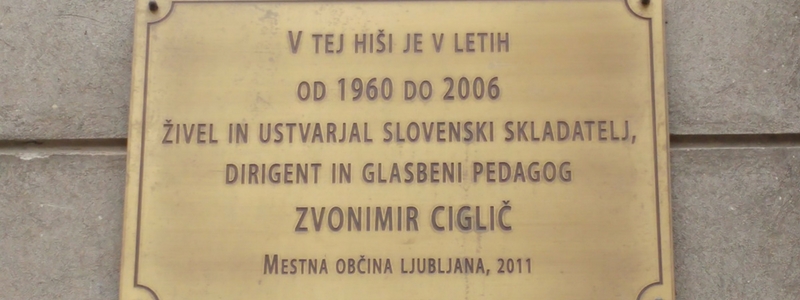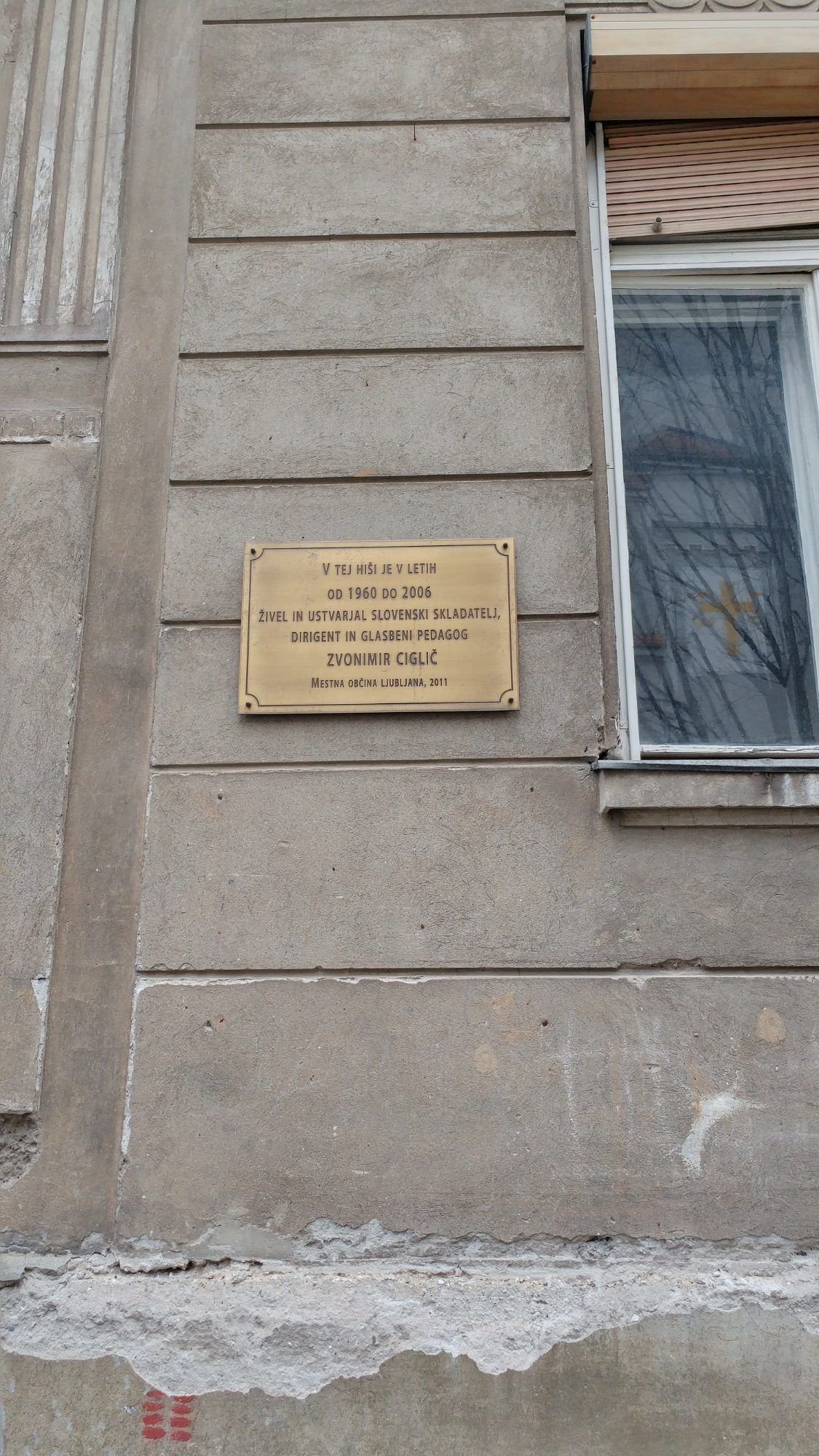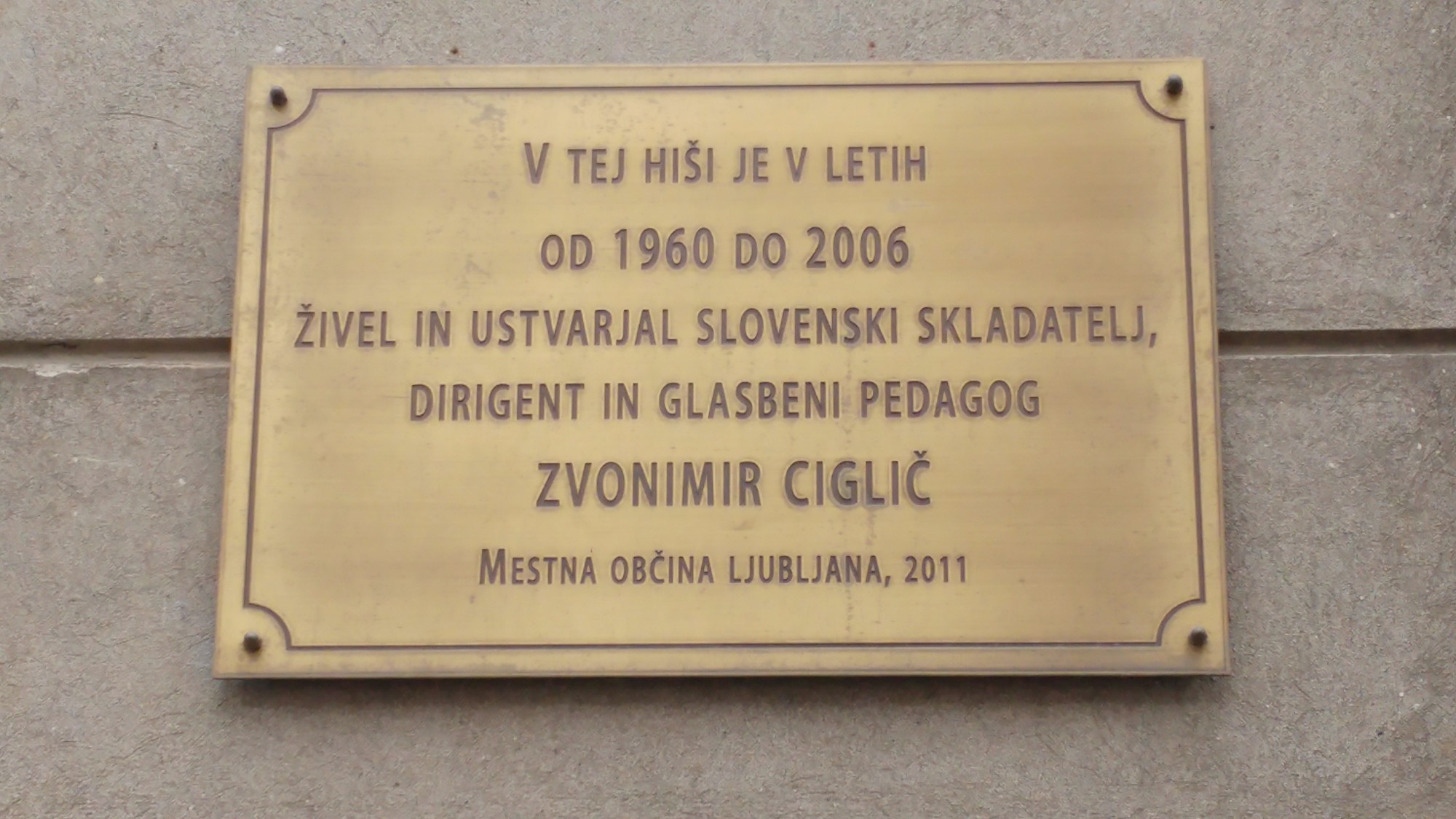In 2011, a memorial plaque was attached to the façade of the house in which the composer lived and worked for several decades. The inscription reads: “Between 1960 and 2006, Slovenian composer, conductor and music pedagogue, Zvonimir Ciglič, lived and worked in this house. The Municipality of Ljubljana, 2011.”
Zvonimir Ciglič
Composer, educator and conductor Zvonimir Ciglič (1921–2006) was an ardent lover of music at a time of political turmoil, a period unfavourable to his musical pursuit. His conducting and composing career lacked the true impetus to really take off, and Ciglič could not reach his potential to the extent predicted by many. While primarily focusing on teaching, his music output testifies to the artistic greatness of a temperamental composer and important Slovenian symphonist.
Born in Goriška brda, Ciglič tended to emphasise his Uskok descent, which he claimed informed his passionate and defiant nature. Thus, his relations with the music art circles were often rather strained.
Although taking piano lessons as late as in adolescence, he progressed rapidly. After graduating from high school, he entered the Secondary Music School, where composer Lucijan Marija Škerjanc aroused Ciglič’s interest in composition and was later his professor of composition at the Academy of Music. Further on, from 1946, Ciglič studied conducting with the acknowledged conductor and composer Danilo Švara, and furthered his studies with Lovro Matačić in Salzburg and Henri Barraud in Paris. He graduated in composition and conducting. Rector Julij Betteto’s encomium commended Ciglič’s sense of symphonism and great conducting flair for broadly dimensioned interpretation.
He achieved notable successes both as conductor and composer, initially working at the Sarajevo Opera, but not being offered a permanent job for political reasons. Returning to Ljubljana, Ciglič could not count on a secure post. While captivating the audiences and winning recognition from critics and professional circles, his conducting achievements did not secure him a lasting engagement with the Slovenian Philharmonic Orchestra or other music institutions. He therefore gradually stopped working as a professional musician and earned a living as a teacher. He taught at Ljubljana’s Secondary Music School and Academy of Education.
In terms of style, musicologist Dragotin Cvetko ranked Ciglič among the most prominent musical figures of his generation, including the composers Krek, Matičič and Škerl. The distinctive characteristic of these composers was that they neither displayed a tendency to a modernistic idea of progress (which defines the Circle of Slavko Osterc) nor reached back to late-romantic idiom, but charted their own path in synthesising old and new styles, in parallel with the approach of international composers, e.g. Bartók and Prokofiev. Ciglič was not interested in experimentation or the search for technical innovation. Although using more rigid musical forms, he heeded his “self-expressive urgency”, which he associated with the late-romantic notion of the emotionally enrapturing qualities of music.
While composing orchestral and vocal-instrumental works, lieder, choral pieces, piano compositions and chamber music, he was particularly adept at symphonic compositions with late-romantic topoi. A most notable example is the impressionistic Simfonija ekstaze or Obrežje plesalk (Symphony of Ecstasy or Waterfront Dancers), written in solitary confinement to army barracks and later used as music for a ballet choreography by Henrik Neubauer. Some of his most noteworthy works are Števerjanska simfonija, Simfonija mortis (St Florian Symphony, Symphony Mortis) and Tri skice (Three Sketches), which articulate the composer’s worldview. It was especially in symphonic texture that his musical idiom developed to acquire expressionistic dimensions.
His other notable works include Concertino za harfo in godala (Concertino for Harp and Strings), piano compositions Nokturno and Bakhanal (Nocturne, Bacchanal), Erotikon (Eroticon) for Voice and Piano, and Božanski absurd (Divine Absurd) for Voice and Orchestra, imbued with the composer’s philosophy: unceasing questioning of the relationship between life and death. With Absurd for Two Quintets Ciglič ventured into the musical avantgarde, and the lieder Usoda and Topoli (Destiny, Poplar Trees) are examples of his technically more challenging vocal repertoire.
Maia Juvanc


